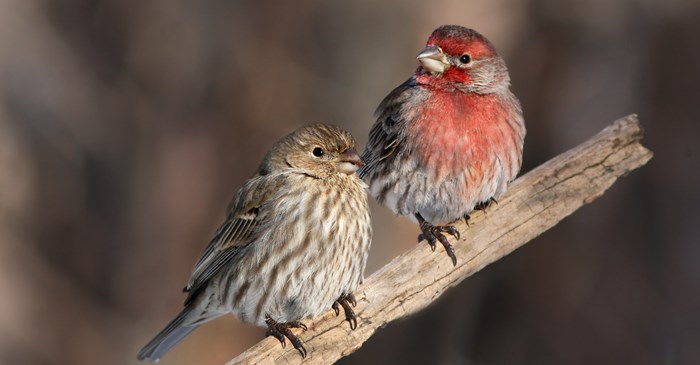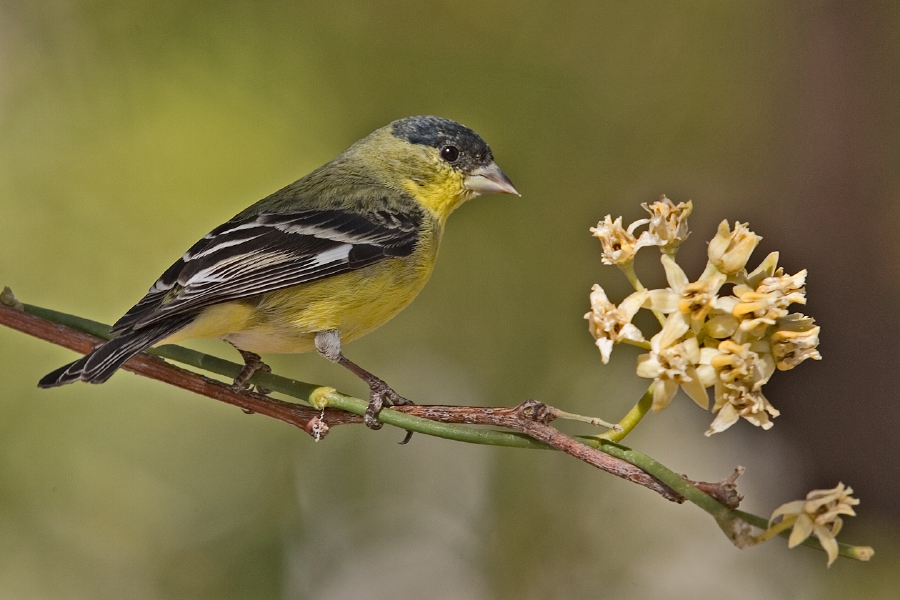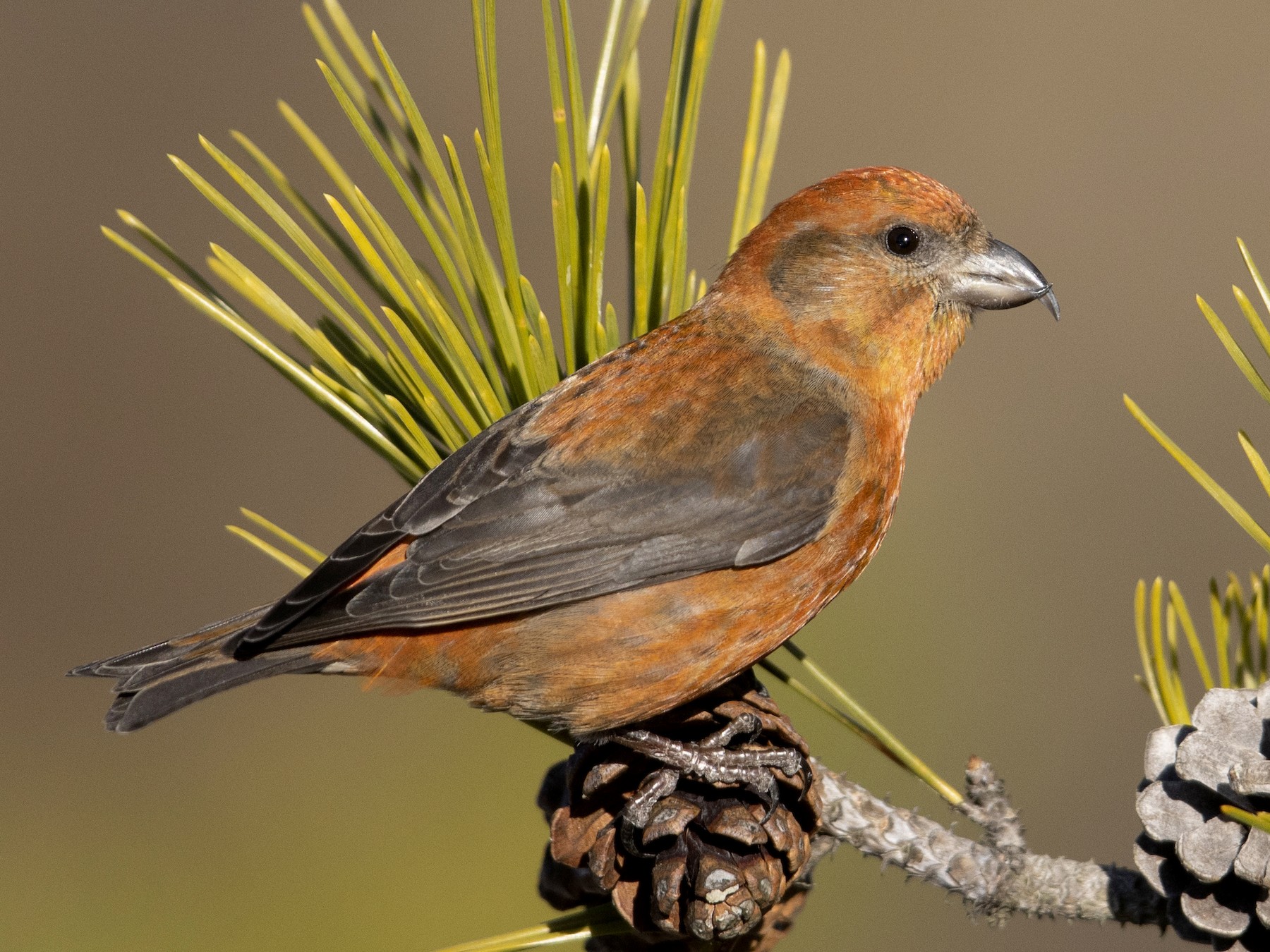Texas is home to a variety of bird species, including several types of finches. These small, colorful birds are a delight to watch and can be found throughout the state.
In this article, we will explore the different types of finches found in Texas, complete with pictures and identification guides. Whether you’re a seasoned birdwatcher or just starting out, this guide will help you identify the various finches that call Texas home.
You are reading: 9 Types Of Finches In Texas With Pictures And Id Guide
From the common House Finch to the elusive Red Crossbill, we’ll cover it all. So grab your binoculars and let’s get started!

9 Types Of Finches In Texas With Pictures And Id Guide
House Finch (Haemorhous mexicanus)
The House Finch (Haemorhous mexicanus) is a bird in the finch family Fringillidae. It is native to western North America and has been introduced to the eastern half of the continent and Hawaii.
The House Finch is a recent introduction from western into eastern North America (and Hawaii), but it has received a warmer reception. Frequents suburban settings across North America, along with open woods, brushy field edges, and deserts.
The male House Finch varies in shades and intensity of red, while females are drab gray-brown overall with plain faces and blurry streaks on underparts.
The red of a male House Finch comes from pigments contained in its food during molt, so the more pigment in the food, the redder the male. House Finches feed their nestlings exclusively plant foods.
The House Finch is now abundant over much of North America, and in some parts of the East, it may be competing with Purple Finches to the detriment of the latter.
Local populations in some areas have been hard hit by a bacterial infection called conjunctivitis, which swells their eyes shut and makes it difficult for them to feed themselves.
Cassin’s Finch (Haemorhous cassinii)
Cassin’s Finch (Haemorhous cassinii) is a bird in the finch family Fringillidae. It is native to the mountainous regions of western North America, mainly in coniferous forests, especially spruce and fir, also in pine and Douglas-fir in some areas and sometimes in pinyon-juniper woods.
The Cassin’s Finch is slightly less well-known than its lookalikes, the House Finch and Purple Finch. It is the characteristic rosy-tinged finch of the mountains of western North America.
Read more : A Look At The Types Of Birds In The Rio Movie
Small flocks of Cassin’s Finch twitter and forage in the tall evergreen forests and in groves of quaking aspen. The male Cassin’s Finch has a peaked head shape and thick, straight-edged bill. It has red crown feathers thanks to carotenoid pigments, which they acquire when they swallow colorful foods like the orange berries of firethorn plants.
Male Cassin’s Finches remain brownish and look like females during their first breeding season. During this time they sing, and this may give the false impression that both sexes sing. These young males may group into “bachelor flocks” during that first breeding season. The Cassin’s Finch is an accomplished mimic, often adding the calls of other species into its own songs.
The Cassin’s Finch breeds semicolonially, with nests on average 80 feet apart. Nests are sometimes as close as 3 feet apart—this usually causes a fight between males until one of the pair gives up.
Lesser Goldfinch (Spinus psaltria)

The Lesser Goldfinch (Spinus psaltria) is a tiny, stub-billed songbird that belongs to the New World goldfinch clade in the genus Spinus. Here are some key features and facts about the Lesser Goldfinch:
– Identification: Lesser Goldfinches are smaller than a Song Sparrow, with long, pointed wings, and short, notched tails. They are mostly black in color, with yellow undersides. Males have a black cap and a bright yellow face, while females have a greenish back and yellow underparts.
– Habitat: Lesser Goldfinches can be found in almost any habitat with trees or shrubs except for dense forest. They are common and conspicuous in many areas, often coming near houses. They are also common at feeders in the Southwest United States and will come almost anywhere with thistle sock feeders.
– Diet: Lesser Goldfinches feed mostly on tree buds and weed seeds. Geophagy, the practice of eating soil or clay, has also been observed in this species.
– Behavior: Lesser Goldfinches often occur in flocks or at least loose associations. Flocks of at least six birds will often be seen at feeders.
– Conservation status: Lesser Goldfinches are widespread and fairly common, with numbers probably stable.
Overall, the Lesser Goldfinch is a common and delightful bird to observe in many parts of the Americas.
Purple Finch (Haemorhous purpureus)
The Purple Finch (Haemorhous purpureus) is a bird in the finch family Fringillidae. Here are some key features and facts about the Purple Finch:
– Identification: The Purple Finch is a sexually dimorphic species, with males being raspberry red on the head, breast, back, and rump, while females are brownish-gray with heavy streaking on their underparts. Both sexes have a short, forked brown tail and brown wings.
– Habitat: The Purple Finch breeds in the northern United States, southern Canada, and the west coast of North America, mainly in coniferous or mixed forests. During migration and winter, they can be found in a wide variety of wooded and semi-open areas, including suburbs, swamps, and overgrown fields.
– Diet: Purple Finches feed on seeds and insects, foraging in trees and shrubs, as well as on the ground. They are also known to visit bird feeders.
– Behavior: Purple Finches are known for their beautiful, warbling song, which can be heard during the breeding season. They are also known to form flocks during migration and winter.
– Conservation status: The Purple Finch is moderately common across its range, but populations have declined in some areas, possibly due to competition with other species like the House Sparrow and House Finch.
Overall, the Purple Finch is a beautiful and fascinating bird to observe in its natural habitat.
American Goldfinch (Spinus tristis)
The American Goldfinch (Spinus tristis) is a small, brightly colored bird in the finch family. Here are some key features and facts about the American Goldfinch:
– Identification: The American Goldfinch is a small finch with a short, conical bill, long wings, and a short, notched tail. Adult males in breeding plumage are bright yellow with black wings and forehead, while females and non-breeding males are duller yellow with brownish-gray wings and forehead.
– Habitat: American Goldfinches can be found in a variety of habitats, including fields, meadows, orchards, and residential areas with trees and shrubs. They are common at bird feeders, where they primarily eat sunflower and nyjer seeds.
– Diet: American Goldfinches primarily feed on seeds, especially those of thistle and other composite plants. They also eat insects during the breeding season to provide protein for their young.
– Behavior: American Goldfinches are known for their undulating flight pattern and their distinctive “potato-chip” call. They are social birds and often form flocks during migration and winter.
– Conservation status: American Goldfinches are widespread and very common, although populations may have declined in some areas.
Overall, the American Goldfinch is a beautiful and common bird that can be easily observed in many parts of North America.
Pine Siskin (Spinus pinus)
The Pine Siskin (Spinus pinus) is a small, streaked finch that belongs to the New World goldfinch clade in the genus Spinus. Here are some key features and facts about the Pine Siskin:
– Identification: Pine Siskins are small, brown, and heavily streaked finches with sharply pointed bills, short, notched tails, and long wings. Some individuals may show yellow in the wings and tail.
– Habitat: Pine Siskins are generally found in coniferous or mixed coniferous-deciduous forests, breeding as far north as central Alaska and northern Canada. During migration and winter, they can be found in a wide variety of habitats, including suburban areas with conifers, weedy fields, and woodland edges.
– Diet: Pine Siskins primarily feed on seeds, especially those of coniferous trees like spruce and pine. They are also known to visit bird feeders, where they will eat thistle, nyjer, and other small seeds.
– Behavior: Pine Siskins are highly nomadic and irruptive, meaning that their movements and abundance can be highly variable from year to year. They are often seen in flocks, even during the breeding season, and may associate with other finches like American Goldfinches.
– Conservation status: Pine Siskins are widespread and abundant, although local numbers can be highly variable.
Overall, the Pine Siskin is a fascinating and highly variable bird that can be observed in a wide variety of habitats across North America.
Common Redpoll (Acanthis flammea)
Read more : 9 Types Of Hawks In Pennsylvania
The Common Redpoll (Acanthis flammea) is a small bird in the finch family. Here are some key features and facts about the Common Redpoll:
– Identification: Common Redpolls are brown and white birds with heavily streaked sides. They have a small red forehead patch, black feathering around a yellow bill, and two white wing bars. They are about the size of an American Goldfinch.
– Habitat: Common Redpolls breed in boreal and taiga regions of both the Old and New World Arctic, where they are often among the most common birds. During migration and winter, they can be found in a variety of habitats, including birches, thickets, tundra scrub, and suburban areas with bird feeders.
– Diet: Common Redpolls primarily feed on seeds, especially those of birch and alder trees. They are also known to visit bird feeders, where they will eat nyjer and other small seeds.
– Behavior: Common Redpolls are highly nomadic and irruptive, meaning that their movements and abundance can be highly variable from year to year. They are often seen in flocks, even during the breeding season, and may associate with other finches like Pine Siskins and American Goldfinches.
– Conservation status: Common Redpolls are still widespread and abundant, although populations may have declined in some areas.
Overall, the Common Redpoll is a fascinating and highly variable bird that can be observed in a variety of habitats across North America.
Evening Grosbeak (Coccothraustes vespertinus)
The Evening Grosbeak (Coccothraustes vespertinus) is a passerine bird in the finch family Fringillidae found in North America. Here are some key features and facts about the Evening Grosbeak:
– Identification: Evening Grosbeaks are large, heavyset finches with very thick, powerful, conical bills. They have a thick neck, full chest, and relatively short tail. Males are stunning with dark heads fading to bright yellow underparts, and mostly black wings with bright white secondaries, while females are overall gray with some white on the wing.
– Habitat: Evening Grosbeaks breed in coniferous or mixed forests of northern North America, and during migration and winter, they can be found in a variety of habitats, including suburban areas with bird feeders. They are known to descend on bird feeders in colorful, noisy flocks, to thrill feeder-watchers and to consume sunflower seeds.
– Diet: Evening Grosbeaks primarily feed on seeds, especially those of box elder, ash, maple, locust, and other trees. They also feed on buds of deciduous trees, berries, small fruits, weed seeds, and insects during the summer.
– Behavior: Evening Grosbeaks are known for their powerful bills, which allow them to crack large seeds with ease. They are also known for their mutual movement courtship, where the male performs a “dance” for the female, swiveling back and forth with raised head and tail and drooping, vibrating wings.
– Conservation status: Evening Grosbeaks are still widespread and abundant, although populations may have declined in some areas. The species is listed as “vulnerable” on the IUCN Red List due to population declines in some regions.
Overall, the Evening Grosbeak is a fascinating and beautiful bird that can be observed in a variety of habitats across North America.
Red Crossbill (Loxia curvirostra)

The Red Crossbill (Loxia curvirostra) is a small passerine bird in the finch family Fringillidae. Here are some key features and facts about the Red Crossbill:
Identification:
– Medium-sized finch with a crisscrossed bill.
– Adult males are red overall with darker brownish-red wings (some individuals may show wingbars).
Habitat:
– The Red Crossbill is found in coniferous woodlands, where it forages on nutritious seeds in pine, hemlock, Douglas-fir, and spruce cones.
Diet:
– The Red Crossbill feeds primarily on seeds, especially those of coniferous trees.
Behavior:
– The Red Crossbill has a unique crossed bill that it uses to pry seeds out of conifer cones.
– They are not migratory, but wander widely outside of the breeding season.
Conservation status:
– Although Red Crossbills as a group are widespread and common, some of the forms (or evident species) are declining in some areas.
Overall, the Red Crossbill is a fascinating and unique bird that can be observed in coniferous woodlands across the northern hemisphere.
FAQS
1. What are the different types of finches found in Texas?
There are several types of finches found in Texas, including the House Finch, Cassin’s Finch, Lesser Goldfinch, Purple Finch, American Goldfinch, Pine Siskin, Common Redpoll, Evening Grosbeak, and Red Crossbill.
2. What do finches eat?
Finches primarily feed on seeds, but some species also eat insects during the breeding season to provide protein for their young.
3. Where can I find finches in Texas?
Finches can be found in a variety of habitats in Texas, including suburban areas with trees and shrubs, coniferous or mixed forests, fields, meadows, orchards, and woodland edges.
4. How can I identify different types of finches?
Each type of finch has unique physical characteristics, such as coloration, bill shape, and wing markings. Identification guides with pictures and descriptions can be helpful in identifying different types of finches.
5. Are finches in Texas endangered?
Most types of finches found in Texas are not endangered, although populations may have declined in some areas due to habitat loss or competition with other species.
Source: https://petstutorial.com
Category: Birds










